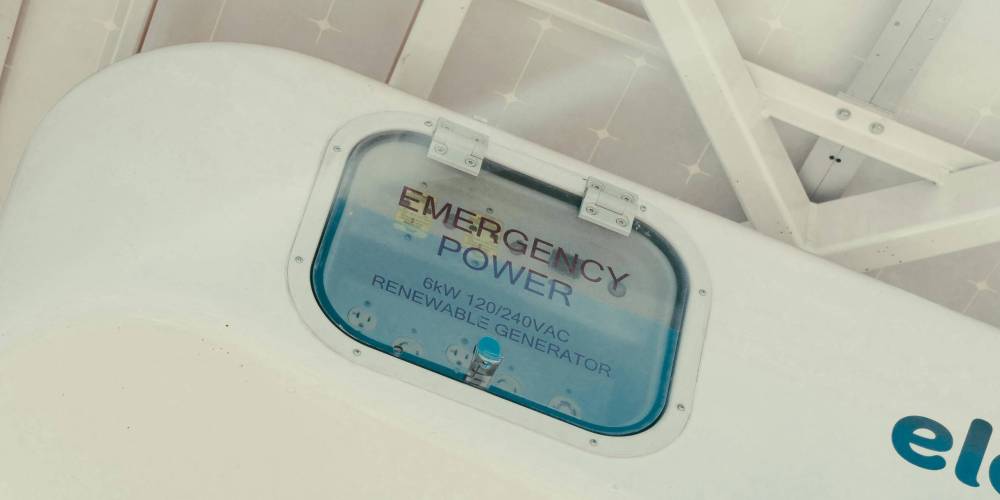Thinking about adding a home battery to your solar setup in Ontario? Whether you’re looking for backup power during outages, lower electricity bills, or more energy independence, battery storage can be a smart investment.
Here’s a quick FAQ to help you understand how it works, what it costs, and what incentives are available.

What are the benefits of installing a home battery?
Installing a home battery can offer several valuable benefits for homeowners:
- Backup Power During Outages: A battery system allows for instant, seamless emergency power to your home during grid outages. You can choose to keep only the essentials online (e.g. fridge, sump pump, lights, internet), or backup your entire home for peace of mind.
- Peak-Shaving and Time-of-Use Savings: With Ontario’s Time-of-Use (TOU) or Ultra-Low Overnight (ULO) electricity rates, a battery lets you store inexpensive off-peak power (or solar energy) and use it during peak periods. This reduces energy costs by avoiding drawing from the grid when rates are highest. In effect, you “shave” the peaks off your hydro bill.
- Quiet, Clean, and Maintenance-Free Backup: Batteries make no noise and no fumes, unlike gas generators. They require no fuel and have no ongoing running cost during outages. Many homeowners prefer this clean backup solution for safety and convenience.
What types of home batteries are available in Ontario?
In Ontario, all battery systems must meet UL 9540 and ESA safety standards. At FIG, we exclusively install LFP lithium-ion batteries due to their superior safety, long cycle life, and advanced features. LFP tech is stable, efficient, and generally the best choice for homeowners seeking reliable, long-lasting, and low-maintenance home energy storage with full compliance under Ontario’s electrical code.
Where can I install a home battery in my house?
Ontario’s electrical code provides specific allowable locations for home battery installations. Here are the most common options:
- Garage (attached or detached): The most common install location. Requires 1 meter clearance around the equipment.
- Indoors: Requires a fire-rated utility or storage room with finished drywall (gypsum board) with an interconnected fire alarm and a self closing fire-rated door.
- Outdoors: Requires a purpose-built outdoor battery enclosure. Limited to batteries with self-heating capabilities.
What kind of maintenance do home batteries need?
Lithium-ion home batteries are virtually maintenance-free. There’s no cleaning, calibration, or manual updates needed; the system manages itself. Compared to gas or propane backup generators, it’s truly “set and forget.”
How long do home batteries last and what affects their lifespan?
Most lithium-ion home batteries last a minimum of 10 to 15 years, with warranties typically covering 10 years and upwards of 10,000 cycles. Brands like Pointguard, Tesla and LG guarantee around 80% capacity retention after a decade. Lifespan depends on usage, depth of discharge, and temperature.
How do I size a home battery for my household’s energy needs?
It depends. Every home has different energy use and backup priorities. For a rough estimate, total the wattage of essential appliances and multiply by how long you want to run them. For example, 2 kW of loads over 10 hours = 20 kWh of storage. Home batteries can be recharged by your solar panels, so batteries are typically sized for stretches of continuous backup without available sunlight. To get an accurate size recommendation based on your usage and goals, contact our team for a personalized assessment.
Can I plug in a generator as a passthrough to the battery system?
Yes! Our home battery systems support generator integration for added resilience in addition to the included automatic transfer switch. This combo is ideal for long blackouts, especially in the more rural areas of Ontario.
What are the typical installation costs (equipment, labour, permits)?
A typical home battery system in Ontario costs $12,000 to $20,000 CAD installed. This includes the battery, inverter, installation, and permits. Prices vary by setup complexity, panel upgrades, and number of battery modules. When a solar system is also being purchased, this amount is often lower. This is because the solar system is usually scaled back to account for additional Net Metering credits generated through battery arbitrage.
Are there incentives or rebates for home batteries in Ontario?
- Canada Greener Homes (Federal): Offers an interest-free loan up to $40,000 (10-year term) for home energy retrofits, including solar and batteries.
- Save on Energy – Ontario (Provincial): Provides up to $5,000 for solar panels and $5,000 for battery storage, covering up to 30% of each project. Requires a home energy audit (rebate available) and application through your contractor. Only available for Load Displacement systems.
- Local Programs (Municipal): Cities like Toronto (HELP) and Ottawa (Better Homes Loan) offer low- or no-interest loans for solar and storage. These are repaid through your property taxes and can be combined with other programs.
If you have more questions about home batteries or solar in Ontario, reach out to our team today. We’re happy to help you plan the right system for your home.
Related Blogs & Articles